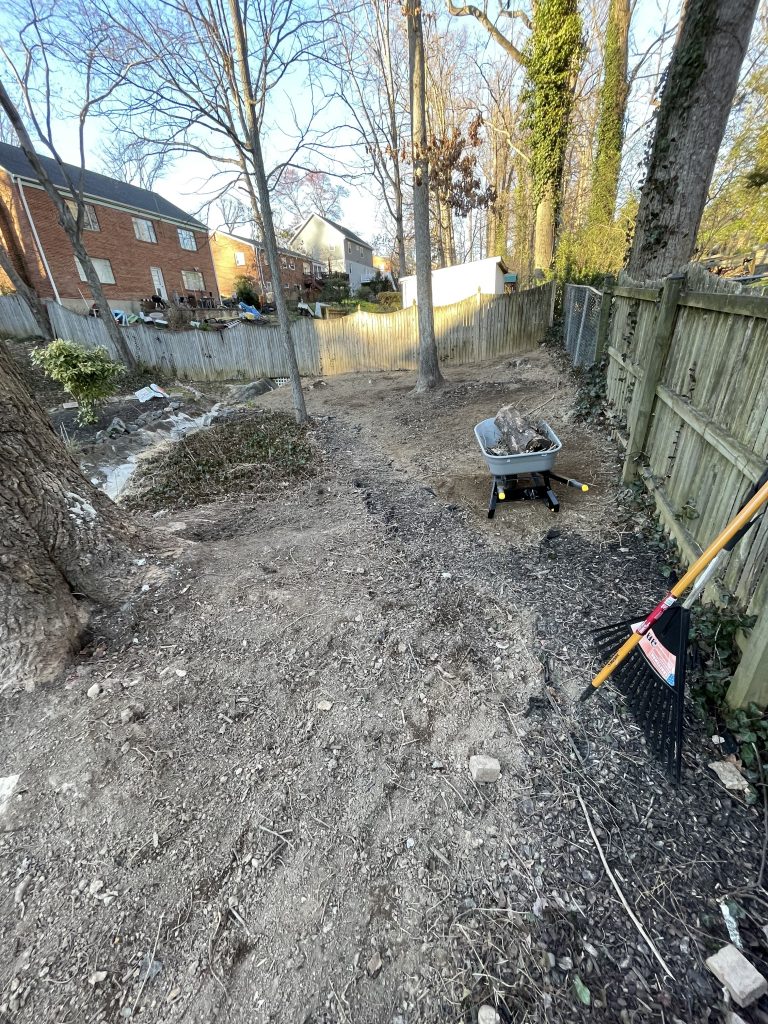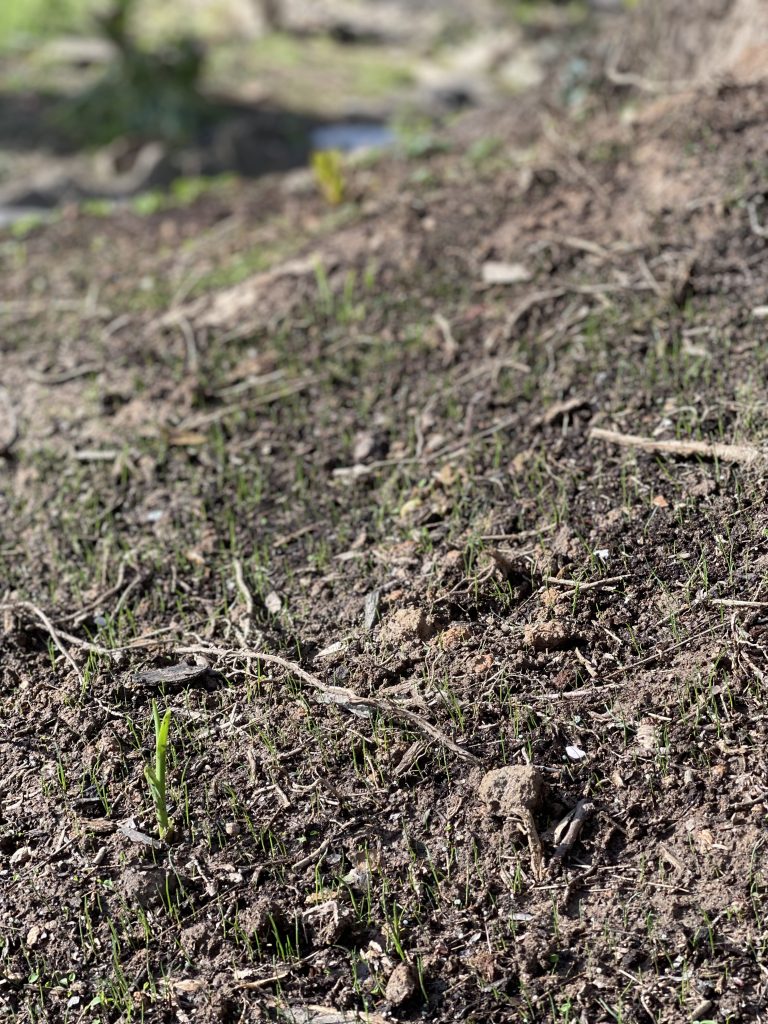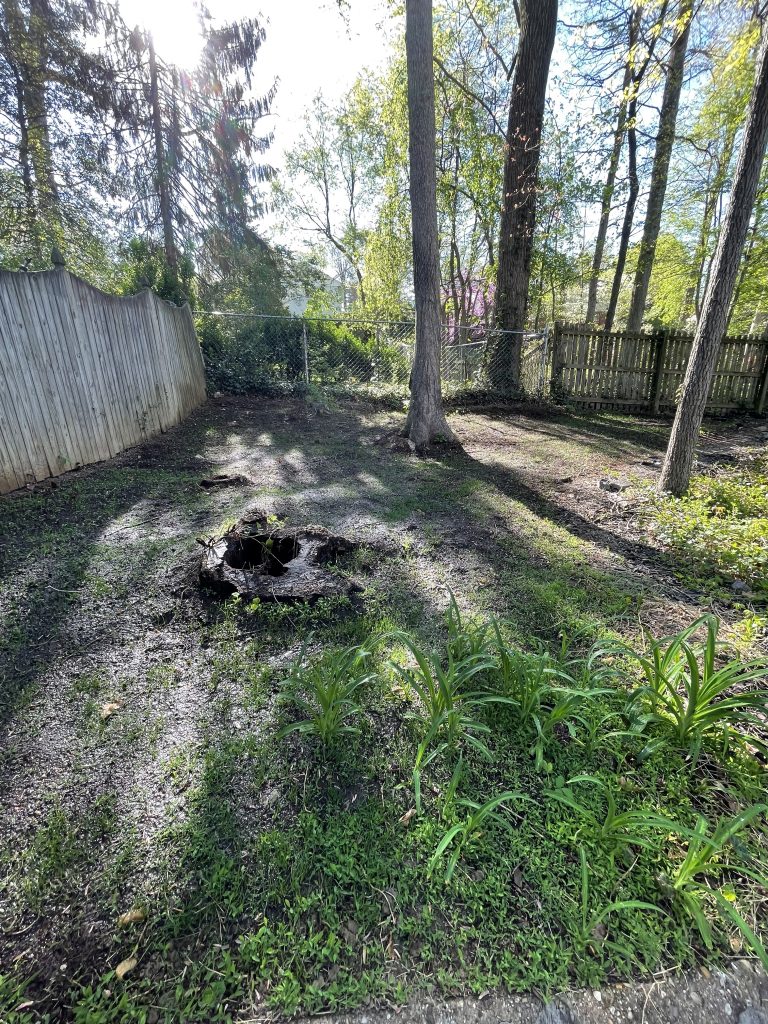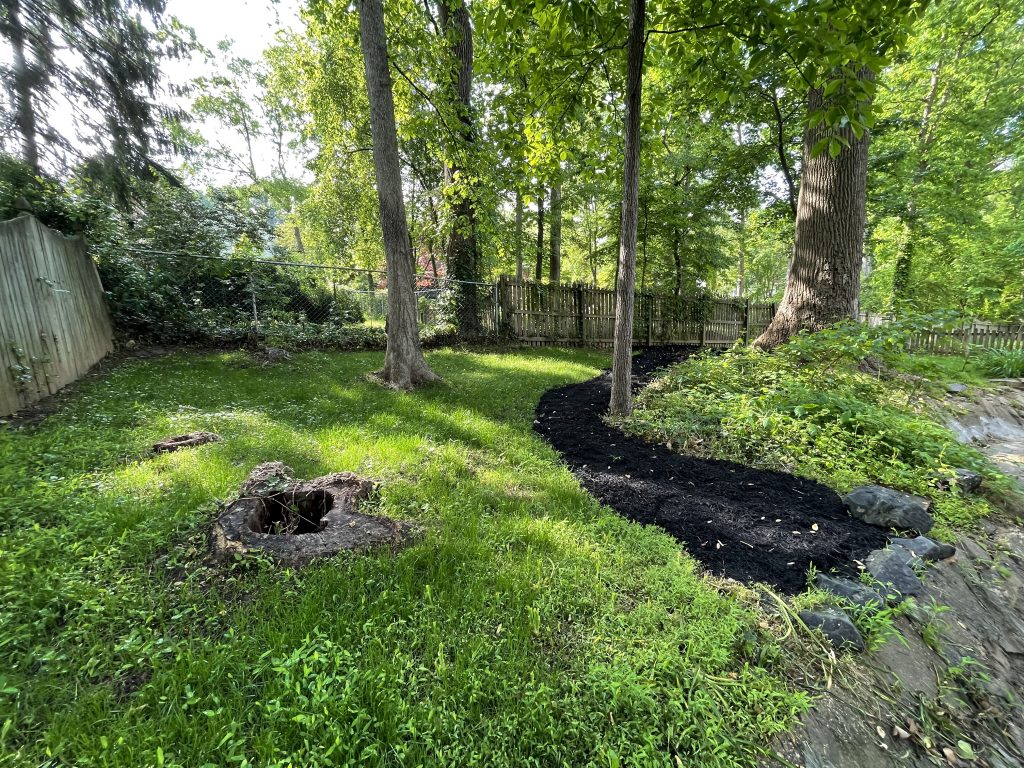When we bought our house in Falls Church Va we were intrigued by the amount of land we were getting but didn’t fully realize the amount of work it needed. The prior owners never did much with the yard and as anyone knows, nature will quickly take over.
The problem with nature taking over is all the invasive plants taking over and killing the native plants you have around you. The other problem is the erosion and damage a wild yard takes on as the climate gets more extreme (rain events).
We have spent the 3 years we have lived here slowly and methodically assessing, clearing, and fixing the various issues in the yard. The backyard has a culvert (water channel) that cuts a third of the yard off from the rest. This has been left wild since the house was built in the 1956. Over that time English Ivy (invasive) and poison ivy (not native but annoying) has taken over that part of the yard.

The other issues we learned moving in was that we had a lot of dead trees in the yard that needed to come down for safety reasons. Once we removed the trees and saw the amount of potential we had, we thought replanting a small forest of native trees, bushes, and plants would be the way to go.
First Step – Test Area
The first area we tested was an area without a lot of poison ivy but plenty of English Ivy. We gutted the area both by hand pulling roots and tilling the soil with a machine during the winter season. We planted grass seed in early Spring with the cool weather and cleared the ivy and poison ivy that crept back the rest of the summer.
Step Two – The main area

Last winter, with the success of the first area, we tackled the largest area of ivy with the most poison ivy. It took the entire month of February to clear out the logs, bricks, sticks, roots, and then till the soil down to prepare for grass. We put grass down in mid-March while the weather was warming but cool and kept a balance of watering between rain and self-watering.
The grass is coming in strong, we have two more mows over it before it will be stable for the summer, we have the rest of May to do this.


Step Three – The Forest
Next year, once we have established grass and cut off the ivy’s from coming back up, we will plan where to plant trees. We’re currently looking at River Birches as the “under canopy” of the larger trees already established in the yard (Poplars and Oaks).
If I’m able to get white bark birches, then we can look into red twig dogwood bushes which will sit starkly against the tree trunks in the winter. We’re also looking at some evergreens to balance the area out but nothing that gets huge.
Finally, the stumps from dead trees with huge holes in the middle will become fern beds, and we’ll plant rows of ferns along the fence line where the grass has a hard time growing.